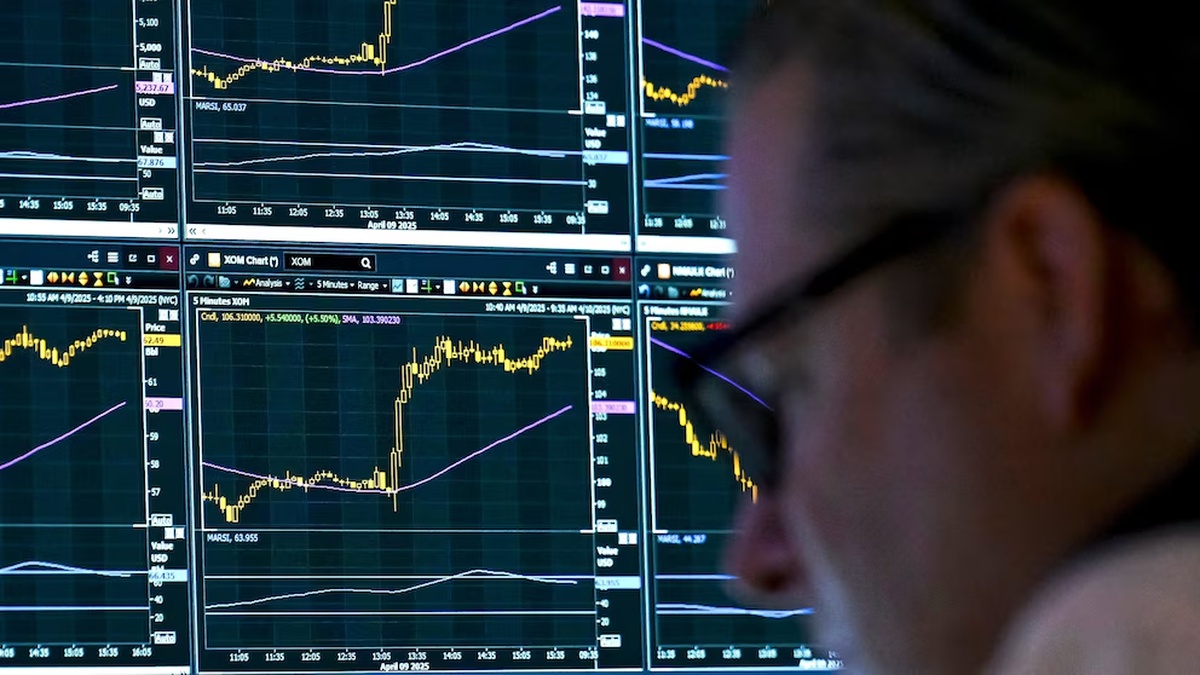Physical Address
304 North Cardinal St.
Dorchester Center, MA 02124
Physical Address
304 North Cardinal St.
Dorchester Center, MA 02124

After a rollercoaster of swings, U.S. stock futures pointed higher Sunday night, as investors digested late-breaking news on President Donald Trump’s tariff policy.
The previous week was one of the most volatile in recent memory, triggered by Trump’s sudden “Liberation Day” tariffs — and then briefly reversed with a 90-day hold. Markets soared midweek, then sank again, before rallying Friday on hints of exemptions.
The market’s whiplash isn’t over — but tech just caught a break.

Late Friday, U.S. Customs and Border Protection quietly released guidance carving out tariff exemptions for smartphones, chips, and other electronics.
Big names like Apple, Nvidia, and Microsoft had been under pressure. But according to Wedbush analyst Dan Ives, the exemptions were “the dream scenario for tech investors.” Apple alone lost $640 billion in market cap in just three days after the initial tariff bombshell.
Still, Trump warned the move is temporary — calling it a shift to a new “tariff bucket” rather than a full escape.
Tech got a lifeline — but it might just be a timeout.
Sunday night futures surged:
But uncertainty looms large. Trump’s shifting trade policies have markets on edge. While the exemptions helped, his administration stressed that more tariffs are still on the table — just possibly not as steep as China’s 145% hit.
Wall Street is cautiously optimistic, but bracing for the next twist.

The CBOE Volatility Index (VIX) spiked above 50 last week. Stocks had their best week in months, but the gains came after extreme selloffs.
All three major indexes are still down about 5% since the “reciprocal tariffs” were announced.
Big gains don’t erase big risks. Investors are still nervous.
Beyond equities, there’s a bigger shift unfolding quietly: global investors are losing faith in U.S. bonds and the dollar.
Former Treasury Secretary Larry Summers compared recent bond behavior to that of an “emerging market.”
Deutsche Bank’s George Saravelos warned of rapid “de-dollarization,” where investors aren’t just avoiding U.S. debt — they’re selling it.
Even if stocks rally, global trust in U.S. financial stability is eroding.

All eyes now turn to earnings. Big banks like Goldman Sachs, Bank of America, and Citigroup are set to report. So are Netflix and United Airlines.
How companies guide for the rest of the year could make or break this rally.
This week’s reports will show if Wall Street’s rebound has legs — or was just relief.
Markets rallied, but not from strength — from temporary relief. Trump’s tariff policies remain unpredictable, and deeper structural concerns are rising around the U.S. dollar and global trust in U.S. assets.
Tech caught a break. Stocks are up. But the fundamentals haven’t changed — and uncertainty still rules.
Daily News. No B.S. No Fluff. Just What You Need to Know.